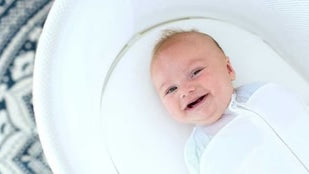Color plays a pivotal role in various aspects of our lives, influencing emotions, behavior, and perceptions. When it comes to kids' clothing, color holds even more significance as it can impact a child's mood, personality, and even social interactions. Understanding the role of color psychology in children's fashion can help parents make informed choices when selecting outfits for their little ones.
The Importance of Colors in Kids' Clothing
Children are highly sensitive to colors from a young age. Bright and vibrant hues can stimulate their senses and spark creativity, while softer tones can impart a sense of calmness and tranquility. By choosing the right colors for their clothing, parents can create a nurturing environment that supports their child's emotional well-being.
Red: The Color of Energy and Passion
Red is a powerful and energetic color that is often associated with passion and vitality. When incorporated into kids' clothing, red can evoke feelings of excitement and enthusiasm. It is a great choice for playwear or special occasions when you want your child to stand out and make a statement.
On the flip side, too much red can be overwhelming and may lead to feelings of aggression or restlessness in some children. It is essential to balance red with more calming colors to create a harmonious look.
Blue: The Color of Tranquility and Serenity
Blue is a calming and serene color that is known to promote relaxation and contemplation. When used in children's clothing, blue can have a soothing effect, making it ideal for bedtime apparel or clothing worn during quiet activities like reading or drawing.
Lighter shades of blue are perfect for creating a sense of peace and harmony, while darker shades can add a touch of sophistication to a child's wardrobe. Blue is also a gender-neutral color, making it a versatile choice for both boys and girls.
Color Associations in Kids' Clothing
Colors can also convey specific messages and associations, which can influence how a child is perceived by others. For example, pastel colors like pink and lavender are often associated with femininity and sweetness, while earthy tones like green and brown can evoke a sense of nature and growth.
By understanding these color associations, parents can use clothing to help shape their child's identity and express their personality. Whether it's bold and playful patterns or soft and delicate hues, the colors chosen for kids' clothing can communicate a lot about who they are and how they want to be seen by the world.
The Role of Color Trends in Kids' Fashion
Color trends in kids' fashion are constantly evolving, influenced by runway shows, celebrity styles, and pop culture. While it can be tempting to follow the latest trends, it's essential to remember that not all colors will suit every child's unique personality and skin tone.
When shopping for children's clothing, parents should consider their child's preferences and comfort levels. Encouraging kids to have a say in their wardrobe choices can help them develop a sense of autonomy and self-expression, fostering confidence and creativity from a young age.
Embracing Individuality Through Color
Every child is unique, with their own likes, dislikes, and quirks. By embracing individuality through color choices, parents can empower their children to express themselves authentically and confidently. Whether it's a bold and bright outfit or a subtle and understated ensemble, the right colors can help kids feel comfortable and confident in their own skin.
Consignment and resale shops are great places to find unique and eclectic pieces that celebrate individuality through color. From vintage prints to one-of-a-kind designs, shopping secondhand can allow children to explore different styles and experiment with new colors without breaking the bank.
Creating a Colorful Wardrobe for Your Child
Building a colorful wardrobe for your child doesn't have to be daunting. Start by incorporating a mix of hues that reflect their personality and energy levels. Whether it's a rainbow of colors or a more subdued palette, the key is to create a wardrobe that is both versatile and expressive.
Remember to consider the occasion when selecting colors for kids' clothing. Bright colors may be perfect for playdates and parties, while softer tones are ideal for more formal events or quiet days at home. By mixing and matching colors strategically, you can create a wardrobe that is as dynamic and diverse as your child.
Color Psychology: A Window into Your Child's World
Color psychology offers a fascinating insight into how colors can shape emotions, behaviors, and perceptions. By incorporating this knowledge into your child's wardrobe choices, you can create a positive and supportive environment that nurtures their development and creativity.
From the vibrant energy of red to the calming serenity of blue, each color has its own unique qualities that can influence your child's mood and outlook. By exploring the role of color psychology in kids' clothing, you can empower your child to express themselves confidently and embrace their individuality through the colors they wear.
Dressing Your Child in Confidence and Creativity
As you navigate the world of kids' clothing, remember that colors are more than just aesthetics – they are powerful tools that can shape your child's identity and self-expression. By leveraging the principles of color psychology and embracing the diversity of hues and tones available, you can help your child dress in confidence and creativity, one outfit at a time.



